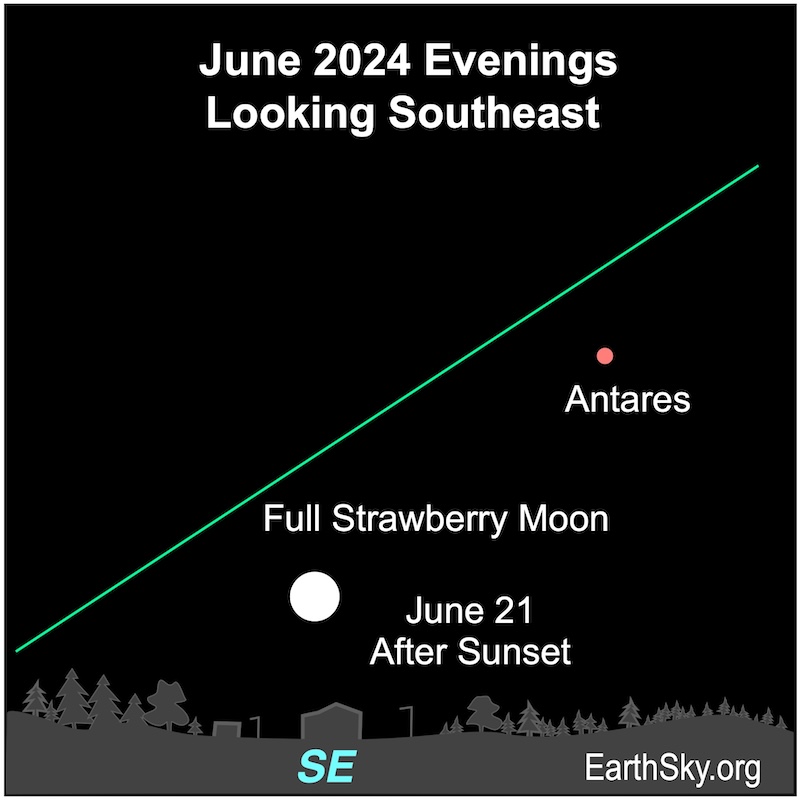
It’s the Strawberry Moon
All full moons have names. In Europe, popular names for the June full moon include the Honey Moon and the Mead Moon. Some Native Americans used the name Strawberry Moon for the June full moon, and that name is still the most common in North America. Many species of berries ripen in early summer, including some strawberries.
When and where to look: Look for the bright, round moon in the east in the evening, highest in the sky around midnight, and in the west before sunrise on June 22.
The fullest moon, for Earth as a whole, will fall at 01:08 UTC on June 22, 2024. That’s 8:08 p.m. CDT on June 21.
At full moon, the sun, Earth, and moon are aligned in space with Earth in the middle. So the moon’s day side – its fully lighted hemisphere – directly faces us at full moon. That’s why the moon appears full. Also note that the moon will look full and round for a day or two before and after the crest of the full moon.
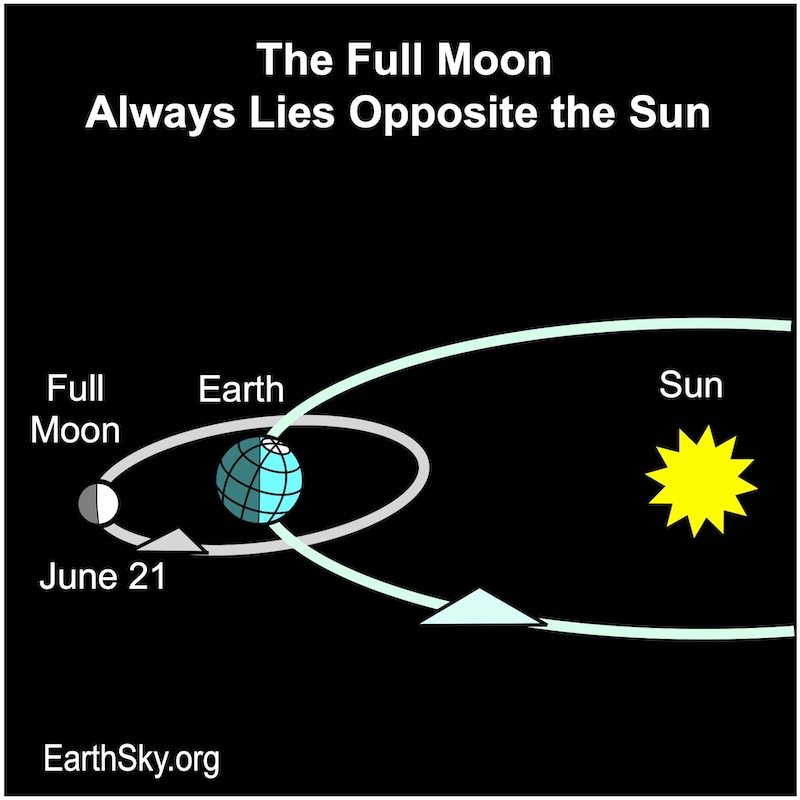
June full moon in front of Sagittarius in 2024
The June 2024 full moon can lie in front of one of three constellations of the zodiac. First, it can lie in the constellation Scorpius the Scorpion. The second is the lesser-known constellation Ophiuchus the Serpent Bearer. And the third is Sagittarius the Archer.
As seen from the Americas, the full moon on the night of June 21, 2024, will be located in the direction of Sagittarius and in the foot of its Teapot asterism. This June full moon also happens to lie almost in the direction of the center of our galaxy, the Milky Way.
You’ll notice a bright star to the moon’s west. It’s Antares, the brightest star of Sagittarius’ neighboring constellation, Scorpius. It is known as the Scorpion’s Heart.
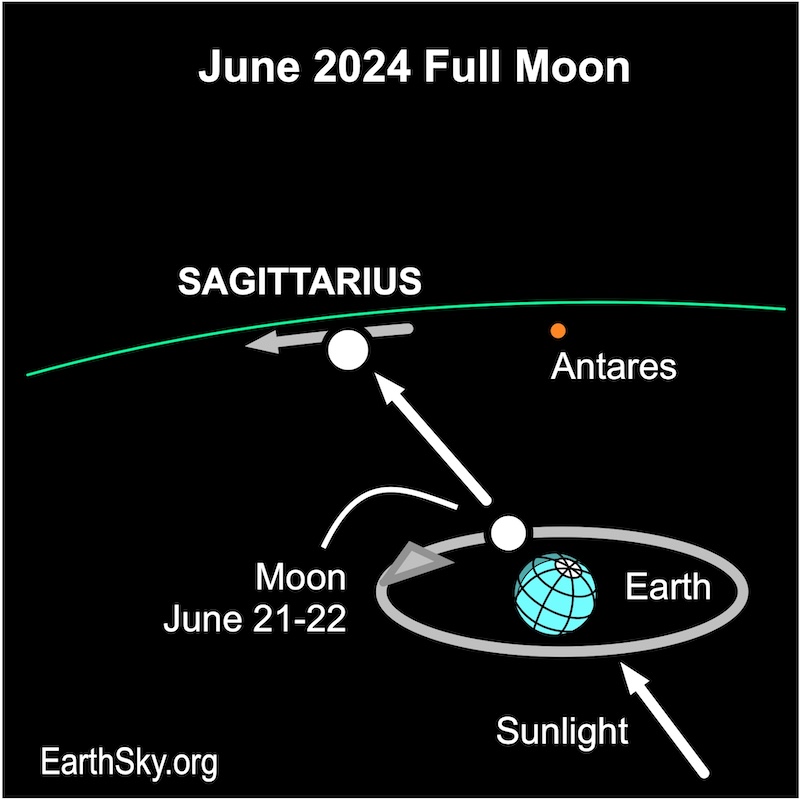
June full moon mimics December sun
And because a full moon stays more or less opposite the sun, the full moon’s nighttime path mimics the sun’s daytime path from six months ago, or six months hence.
This full moon occurs very close to the June solstice, so the moon follows nearly the same path across the sky as the December solstice sun. The December solstice is the Northern Hemisphere’s winter solstice. Thus, the moon’s trek on the nights around the June full moon will resemble the low path of the winter solstice sun.
North of the Arctic Circle, the wintertime sun never climbs above the horizon. So neither will this June full moon.
Meanwhile in the Southern Hemisphere, the June full moon’s flight across the sky will mirror that of the high summer solstice sun.
And, south of the Antarctic Circle, the moon will be out for 24 hours around the clock, simulating the midnight sun of summer.
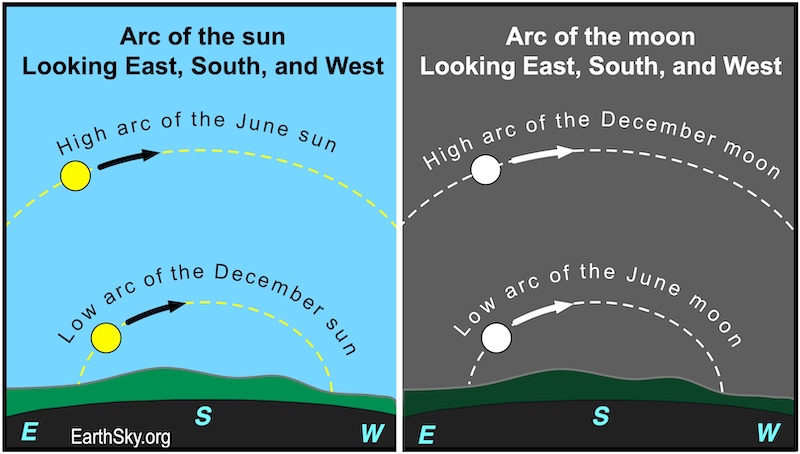
Arc of the June full moon
The moon’s arc across our sky varies from month to month and season to season. Every full moon rises along the eastern horizon, opposite the sun as it sets in the west. And every full moon arcs across the sky throughout the night, and sets along the western horizon around dawn. So for viewers in the Northern Hemisphere, the arc of June’s full moon is lower than the paths of the full moons since December.
On the other hand, for those in the Southern Hemisphere, the full moon’s arc across the sky is climbing higher with each successive month since December. So, it reaches its highest at the full moon falling closest to the June solstice, which occurs sometime from mid-June through early July. In 2024, the June 21 full moon is just one day after the solstice.
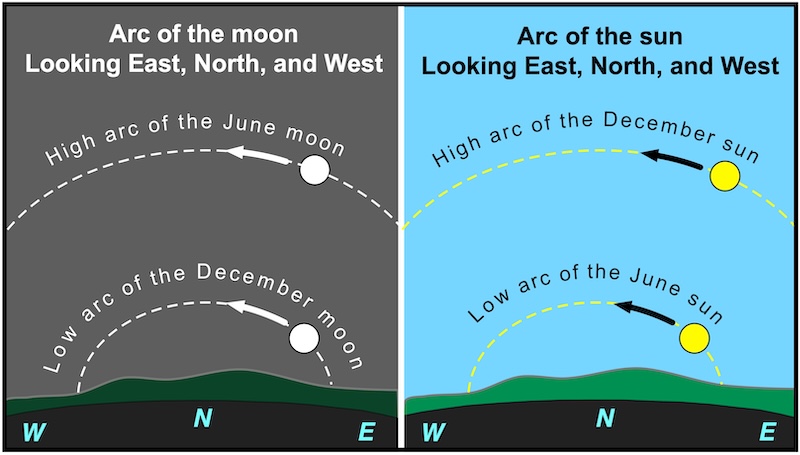
Bottom line: The June full moon – the Strawberry Moon – will occur overnight on June 21-22, 2024 and will lie in the constellation of Sagittarius.











